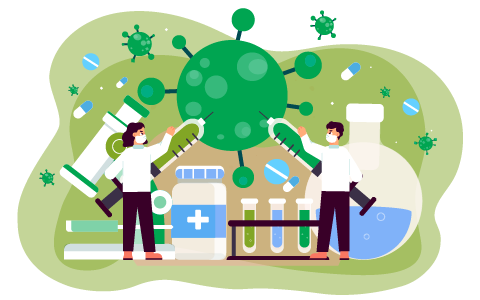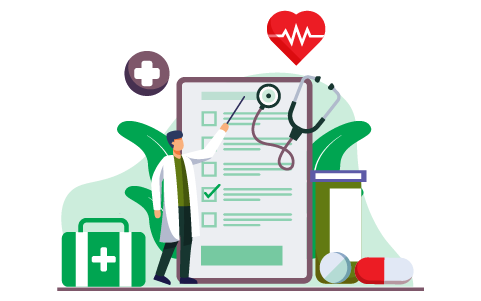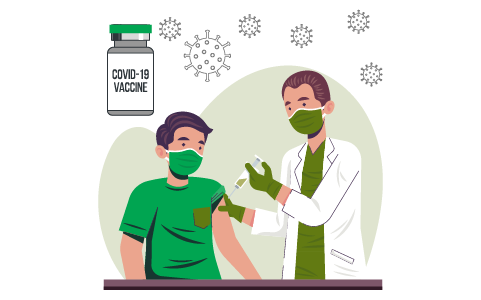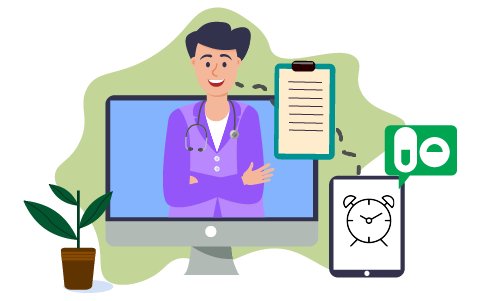-
Standard Protocol for Adults
- For confirmed COVID 19 illness clinically or positive test (PR-PCR or Rapid Antigen); or
- Having one or more of common symptoms, even after taking all Covid-19 precautions, within the home or outside; and, more so, if in contact with COVID-19 positive patients
-
Common Symptoms
Of the following, any symptom(s) appearing singly or more, in any order, whether together or after a gap of few days should be assumed to be a symptom of COVID-19, unless proven otherwise:
- Fever (with or without chills; chills with or without shaking), often preceded by other symptoms which the person may have good reasons to expect at this time of the year, such as:
- Unexplained severe headache even if prior to any other symptom
- Unexpected tiredness, general weakness or fatigue even if prior to any other symptom
- Unexplained loss of appetite even if prior to any other symptom
- Unexplained shortness of breath, breathing difficulty, fast or slow heart rate, heaviness of chest (chest pressure/heaviness/palpitations), or chest pain (at rest or on coughing) even if no other symptoms
- Respiratory symptoms such as those of flu or a common cold such as sneezing, stuffy/running nose, itchy throat, throat pain, slight cough (dry or with phlegm/sputum/mucous), hoarse voice even if no other symptoms
- Loss of smell and/or loss of taste even if no other symptoms
- Muscle pain, body aches/pains, etc. even if no other symptoms
- Food poisoning symptoms such as nausea, vomiting or loose motions, stomach/abdominal pain, even if no other symptoms
- Dizziness and Vertigo even if no other symptoms
- Common skin conditions (such as itching, rashes, dryness, scaling),
- Watery or pink/red eyes even if no other symptoms Mental confusion or brain fogginess even if no other symptoms
- Excessive sleepiness even if no other symptoms
- Excessive urination, even if no other symptoms
- Bluish face lips or discolouration of toes or fingers, even if no other symptoms
- Symptoms of stroke even if no other symptoms
- Symptoms of heart attack even if no other symptoms
-
Severity of Illness Categories
- In general, adults with SARS-CoV-2 infection can be grouped into the following categories. However, the criteria for each category may overlap or vary across clinical guidelines and clinical trials, and a patient’s clinical status may change over time.
- Asymptomatic or Pre-symptomatic Infection: Individuals who test positive for SARS-CoV-2 (by RT-PCR or rapid antigen test) but who have no symptoms of COVID-19
- Mild Illness: Individuals who have any of the various signs and symptoms of COVID-19 (e.g., fever, cough, sore throat, malaise, headache, muscle pain, nausea, vomiting, diarrhoea, loss of taste and smell) but who do not have shortness of breath, dyspnoea. No abnormality in chest imaging or HRCT score up to 7/25
- Moderate Illness: Individuals who show evidence of lower respiratory disease during clinical assessment or imaging and who have an oxygen saturation (SpO2) ≥94% on room air at sea level or HRCT score between 8/25 to13/25.
- Severe Illness: Individuals who have SpO2 <94% on room air at sea level, respiratory ? frequency>30 breaths/min, or HRCT score of 13/25 or above.
- Critical Illness: Individuals who have respiratory failure, septic shock, and/or multiple organ dysfunction.
-
Next Steps
- Self isolation
- If you have any of the above symptoms, immediately isolate yourself from others. Please note:
- 99% of mild illness patients cannot infect others by day 10 from start of first symptom.
- 99% of moderate illness patients cannot infect others by day 14 from start of first symptom
- 99% of severe illness patients cannot infect others by day 20 from start of first symptom
- All positive patients in the same house do not have to remain in different rooms
- If you have any of the above symptoms, immediately isolate yourself from others. Please note:
- Covid-19 Testing
- Get the RT-PCR test done; preferably in the first five days after onset of any of the above symptoms; don’t wait for fever or severe cough.
- Test, if possible, all the contacts especially those living in the same house-hold including household staff, whether part-time or full-time. They are all deemed to be positive and should watch out for symptoms and keep a record of their oximeter readings.
- Finger Oximeter (%SpO2 level and Pulse Rate) readings:
- Make sure the oximeter is functioning OK; there are many poor quality oximeters (counterfeit/fake brand) on the market. Check with another finger ? oximeter as soon as possible. Test the oximeter on a normal person. If not OK, replace it.
- In the sitting position, record oximeter reading in the middle or index finger (whichever gives a higher reading) of dominant hand, which is the hand most used by the person concerned. If the oxygen (SpO2) level is 94% or above nothing further to be done. All oximeter readings at rest should normally be above 94% unless a medical reason or history of smoking accounts for a lower level. Normal pulse rate at rest should be anything from 60 to 90 heart beats per minute (BPM). If below 60, consult a doctor. If above 90 (without fever) then also consult your doctor too.
- Over the next days, if oxygen (SpO2) readings in the sitting position show a declining trend over time, then record oximeter reading again after lying down in bed; do so while lying on your left or right side. If there is an improvement of 2 or 3% in the SpO2 level. If no improvement noticed then the next step is to take your oximeter readings after a 6-min walk in your room, provided walking for so long is not a problem. If unable to walk for 6 min, please do not push yourself; try and see if you are able to walk for a shorter duration of time, without undue exertion. Stop before becoming breathless or if you develop heaviness or pain in the chest. Record your oximeter readings (oxygen level as well as pulse rate) and keep a systematic record.
- In an anxious person, the oxygen level may drop as that person stops taking deep breaths due to anxiety. Such a person should walk for 6 minutes and record the reading again. If the drop in oxygen level is due to anxiety, it will improve in a matter of minutes.
- If SpO2 falls a bit lower than 94% (say, up to 92%) do not panic, as normally most patients are quite safe up to a level of 88% or so.
- NOTE:
- Very old persons (above 80) with old lung problems may even otherwise have SpO2 readings in normal
times around 90% plus or minus 2. So don’t panic if the readings get lower up to 85% in such
patients. Not just the oximeter reading, but the number of breaths per minute is also a good
guide. If the breathing is becoming much faster (24 or higher) or there is difficulty in breathing,
you have to start taking action.
- Rate of breathing Try to count the number of breaths per minute (BPM) at rest. Ask someone else to do so by counting the number of times your chest or abdomen moves up or down in one minute. Normal BPM is about 20 or so. If rate above 24 BPM talk to your doctor.
- Body Temperature Keep record of body temperature three times daily.
- Blood Pressure Keep record three times daily; essential for high BP patients
- Blood Sugar Keep record of blood sugar, three times daily. Morning fasting sugar, two hours after lunch and before dinner
- Very old persons (above 80) with old lung problems may even otherwise have SpO2 readings in normal
times around 90% plus or minus 2. So don’t panic if the readings get lower up to 85% in such
patients. Not just the oximeter reading, but the number of breaths per minute is also a good
guide. If the breathing is becoming much faster (24 or higher) or there is difficulty in breathing,
you have to start taking action.
- Self isolation
-
What to do when Oxygen (SpO2) level drops below 94%
Do one or more of the following in the given order:
- Do deep breathing (pranayam) exercises to see if it improves oximeter SpO2 reading by 4 to 5%. And/or
- See if the patient can walk for a few minutes; this often improves the SpO2 level by up to 5%. And/or
- If walking also doesn’t help or takes the SpO2 level even lower, then try to make the patient lie in the *prone position* (on the stomach, not on the back) in the bed, with pillow support at three places: below head, below belly and below knees. Turn the head to one side. If a patient cannot be put or kept in the prone position for a significant length of time, let him/her lie on right side or left side, whichever gives better oximeter readings. In addition do deep breathing in whatever position the patient is lying down. This often improves oximeter reading by about 2% to 5% (In many cases, the prone position is very uncomfortable or totally impossible or, worse, lowers the SpO2 level) And/or
- Use Inhaler Budesonide Inhaler (any brand) twice a day; each time inhale a total of 800 mcg; e.g., 4 puffs of 200 mcg/puff or 8 puffs of 100mcg/puff inhaler. Avoid inhaling or using any other medicine when nebulizing with Budesonide unless there are asthma like symptoms. Also, avoid steam inhalation as it may do more harm than good. If Budesonide inhaler is not available, use an inhaler having a combination of Budesonide and Formoterol (any brand)
- Also try to arrange for a standby Oxygen Cylinder or preferably an Oxygen Concentrator.
-
Diet
- No restrictions. Normal Diet, but increase protein intake; reduce carbohydrate intake (critically important if your blood sugar is high).
- If there is loss of appetite, take smaller more frequent meals.
- Take liquid or semi solid foods. Daal, dahi, kitchdi, daliya, etc.
- Diabetics and high blood pressure patients must make sure to eat the right kind of food only.
- Diabetics must monitor their sugar thrice daily; fasting sugar in the morning, two hours after lunch and before dinner and keep a record.
-
Fluid intake
- Remain well hydrated (drink enough fluids/liquids) throughout the day, especially if you have high fever and/or vomiting or loose motions.
- Watch the amount of urine and it’s colour. If less urine output or it appears to be darker in colour than normal, increase the fluid intake to two litres per day, provided this is medically speaking not disallowed due to a medical condition such as a failing heart or kidney failure.
- Those who are long standing diabetics, hypertensives, have chronic heart failure or are elderly (above 60 years) have poor kidney function. They often have to watch their fluid intake, and also the Sodium and Potassium levels in their blood. Ask your doctor for guidance in your specific circumstances.
-
Treatment
- Medication
- Fever: keep a record. Paracetamol 650 mg (any brand) to be taken (maxi-mum one tablet six hourly) if fever is above 101 or if it is bothersome. It can also be taken if there is a lot of body ache or headache, or even severe pain in the eyes or throat. However, avoid taking even Paracetamol 650 mg if fever is below 101 and is not bothersome. Drink enough water/fluids to remain well hydrated.
- Sore throat: warm saline gargles or betadine gargles.
- Dry cough, throat irritation, sneezing or running nose: a) Tab Levocetrizine or Cetrizine (any brand), 5 mg tablet: One tab once a day preferably at bed time and any home remedies Budesonide Inhaler (any brand) twice a day; each time inhale a total of 800 mcg; e.g., 4 puffs of 200 mcg/puff or 8 puffs of 100mcg/puff in-haler. If Budesonide inhaler not available, use inhaler having a combination of Budesonide and another medicine such as Formoterol (any brand). Rinse your mouth with water after inhaling the morning and evening? doses.?
- Wet cough (cough with phlegm): Ambroxol syrup, 1 or 2 teaspoons thrice a day, as needed. If the phlegm is dark yellow or green, an antibiotic will have to be started for which please consult your doctor.
- Loose motions: Take any Oral Rehydration Powder (any brand, such as Electral), as many times as needed. Also take curd as often as possible. Eat light meals. Avoid taking antibiotics like Tab Norfloxacin, Tab Loperamide (any brand).
- Lower than normal Oxygen level (use of steroids and blood thinners): Adult patients in the serious category and whose oxygen has dropped to 90% or lower (and who cannot be shifted to hospital) should consult a qualified physician for being put immediately on oral steroids at the right dose along with a preventive dose of oral blood thinner such as tablet Apixaban (any brand) or tablet Rivaroxaban (any brand). Any pa-tient already on aspirin should stop taking it before starting Apixaban. This is the single most important treatment to be given even before starting supplemental oxygen. Remain in a position which gives the best oximeter reading, do not get up except only to eat or drink. Avoid getting up to go to the washroom.
Generally, such patients are given one of the following four steroids. However depending on the weight and other illnesses the dosage may have to be adjusted. Therefore, it is important to consult a doctor. If you cannot get the one prescribed by your doctor, then another steroid could be given orally at the equivalent dosages indicated against each:
Tab Dexamethasone (any brand)
6 mg total dose per day, divided in two equal parts of 3 mg each,12 hrs apart;
Or
Tab Methylprednisolone (any brand)
32 mg total dose per day, divided in two equal parts of 16 mg each, 12 hours apart;
Or
Tab Prednisolone or Prednisone (any brand)
40 mg total dose per day, divided in two equal parts of 20 mg each, 12 hours apart;
Or
Tab Deflazacort (any brand)
48 mg total dose per day, divided in two equal doses of 24 mg, 12 hours apart.
- General immunity boosters
- Tablet Vitamin C 1000 mg twice daily for 15 days. (Not essential)
- Tablet or Sachet of Vitamin D, if needed; take only after blood test and with doctor’s prescription. In general, if the Vitamin level is inadequate 60,000 international units in one tablet or sachet to be taken once a week for a maximum of 8 weeks. Consuming more than 6 lacs units in a whole year can cause vitamin D toxicity which raises blood calcium levels beyond normal. This may cause formation of calcium kidney stones and permanent damage to kidneys.
- Zinc Minimum 10 mg; preferably 50 mg once a day. If taking 50 mg should not be taken for more than 15 days
- Medication
-
Regular medication
Continue all medicines already being taken for chronic illnesses like high blood pressure, diabetes, thyroid illnesses, asthma, cancer, arthritis, etc. These medicines may need to be adjusted, especially if you are taking steroids which can increase blood pressure and sugar levels. Please consult your regular doctor for this purpose.
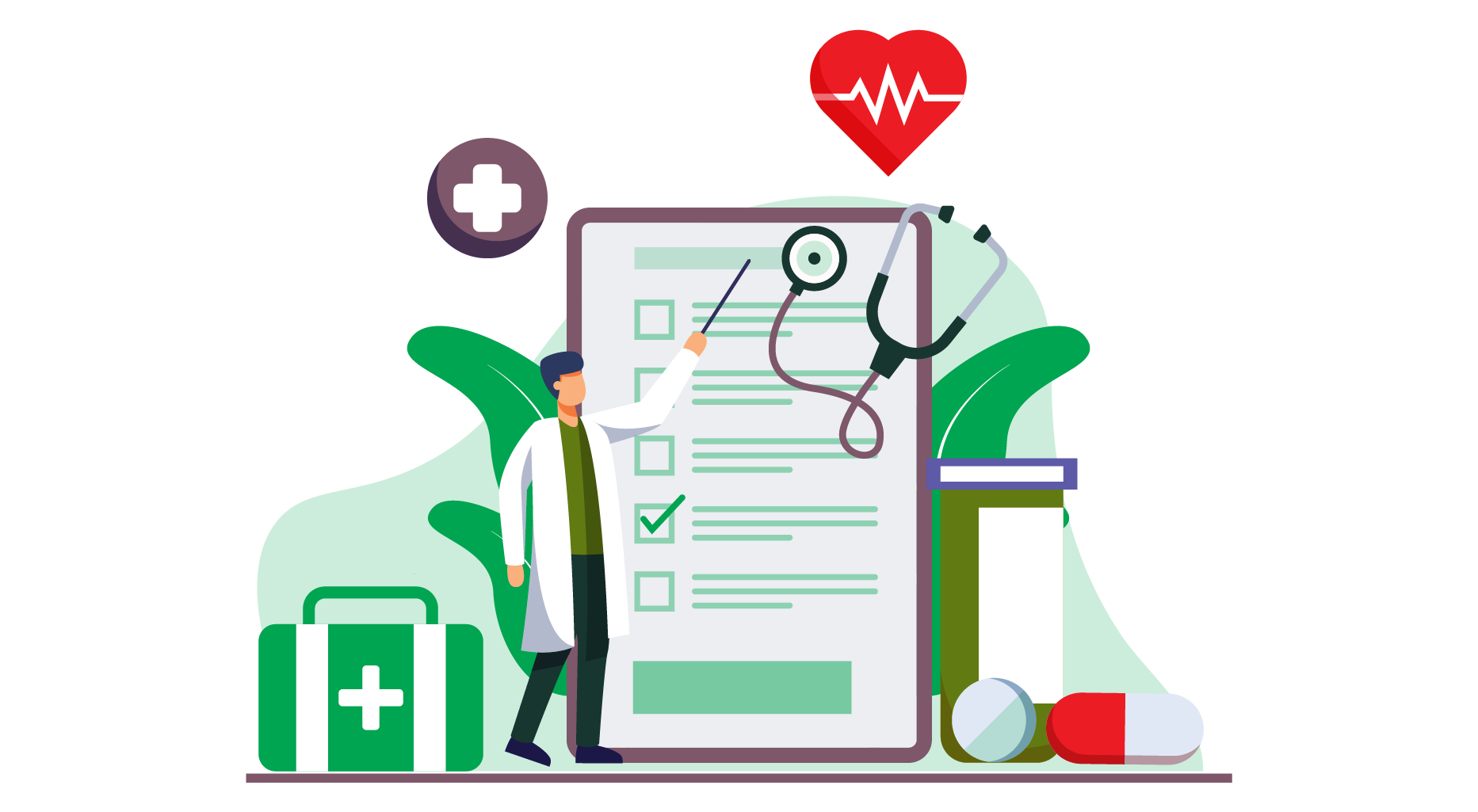
Standard Protocol for COVID-19 (For mild, moderate and severe Covid-19 cases at home)
-- by Dr.Guriqbal Singh Jaiya on May 6th, 2021

